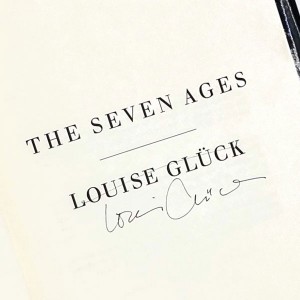Related Information
Many authors simply sign their name on the title page, but even this seemingly simple act is a source of disagreement among authors over the “best” or “proper” way to sign. Some authors cross out the printed author name on the title page before signing their own (often citing "tradition" as their justification). Others just simply sign their name. Some consider writing on the title page a defacement, and prefer to sign on the half-title, flyleaf or elsewhere. Others make it a habit to add the date or even a small doodle beside their signature.
"I always put the date and location and a drawing. It's a message in a bottle, a signed and inscribed book." — Amy Holman
When the author adds a reader’s name or some comment this goes beyond a signed copy and becomes an inscribed book. What is the significance of this distinction? Antiquarian booksellers look at inscribed books in a different light. In the words of ABAA-member Ken Lopez , “when you buy a signed book you are purchasing a signature, but when you buy an inscribed book you are getting a story."
Does this mean an inscribed book is better — or more desirable to a book collector — than a signed one? Well, not necessarily. If the inscription is based off the acquaintance of 30 seconds chit-chat in a signing line, then that’s unlikely to be of interest to anyone besides the original purchaser of the book. If the inscription is from (for example) Ernest Hemingway to Gertrude Stein referencing a conversation they had while editing the book, then it’s safe to say that copy would be more desirable.
From the reader’s perspective, whether a book is signed or not appears to be a simple affair when compared to the myriad decisions a writer must make before signing! If you use a pen-name (or names, as many authors now write in different genres and use different pseudonyms for each) is that what you sign or do you use your real name? If you publish under your real name, do you use your real (legal) signature -- putting yourself at risk of forgery -- or do you develop a signature reserved just for your books? This “writer’s signature” can have real benefit if your books become bestsellers and your publisher wants you to mass-sign 1000s of copies at one time — if you’ve ever thought your favorite author’s signature looks like a single letter with a line after it, this is why! Then there’s the question of how to personalize a book to somebody you’ve never met before or worse: how to personalize the book to somebody who ordered it online or who cannot be at the reading? Some authors write 'To...' only for people they meet in person, and reserve the phraseology 'For...' for those anonymous internet orders. Others simply write what the reader asks of them. Still others reserve ‘To…’ only for people already known to them, and otherwise default to 'For….' Like the question of whether to strike-out the printed author’s name, there is no right or wrong answers to these considerations, and each author must do what feels best.
Curiously, the bible of book terminology, John Carter’s ABC for Book Collectors, does not define the phrase signed book — perhaps suggesting it is of relatively recent coinage? Carter does define an inscribed book as having been “autographed or inscribed by the author.” Today, most book cataloguers distinguish between a signed book (in which the author has simply written their name) and an inscribed book (in which they have also written additional material).
Learn more: Signed vs. Inscribed Books...
